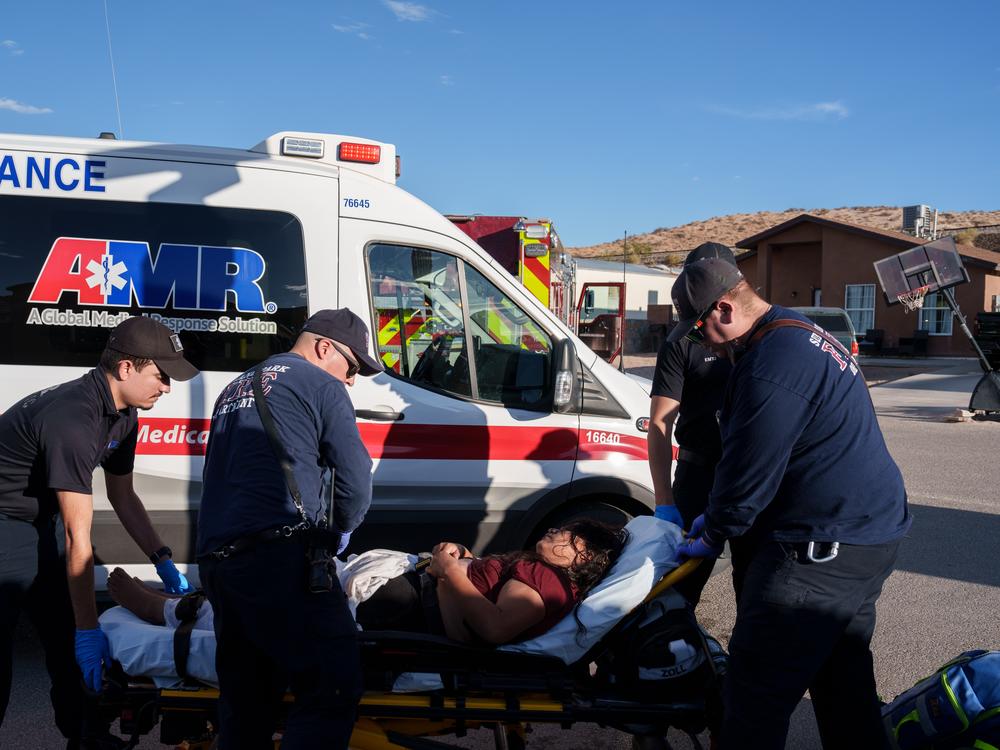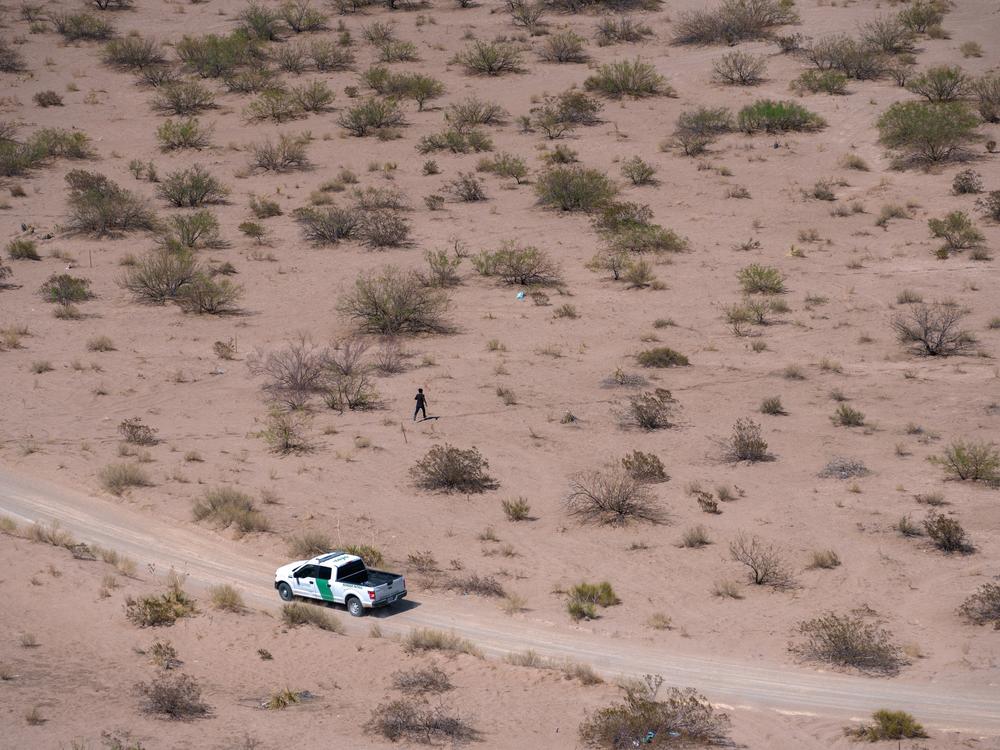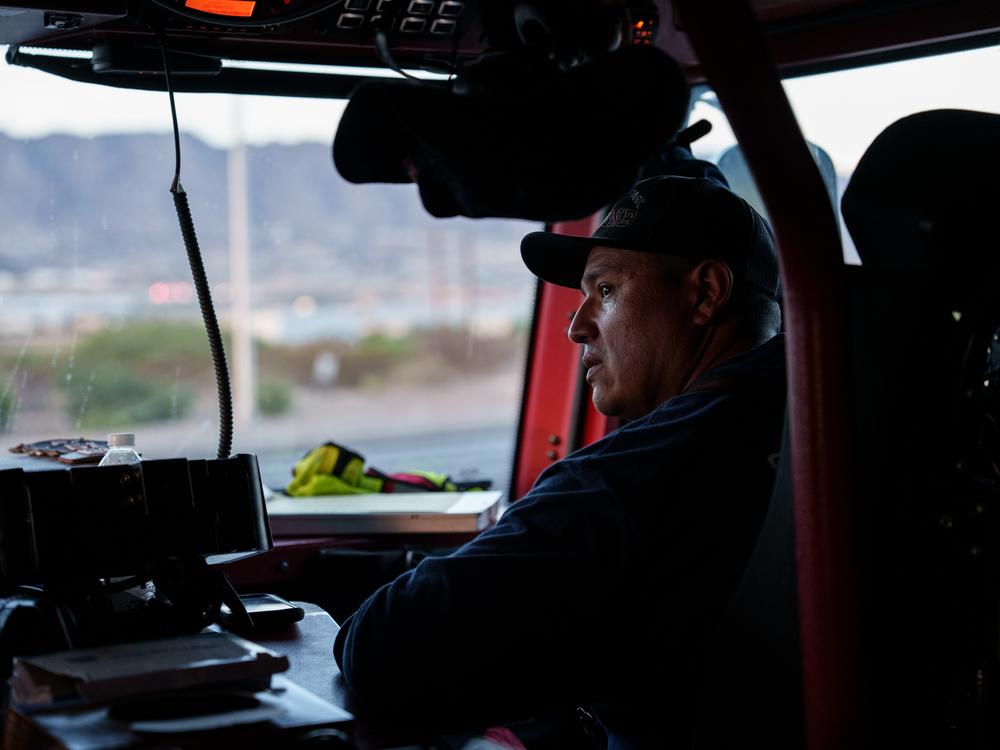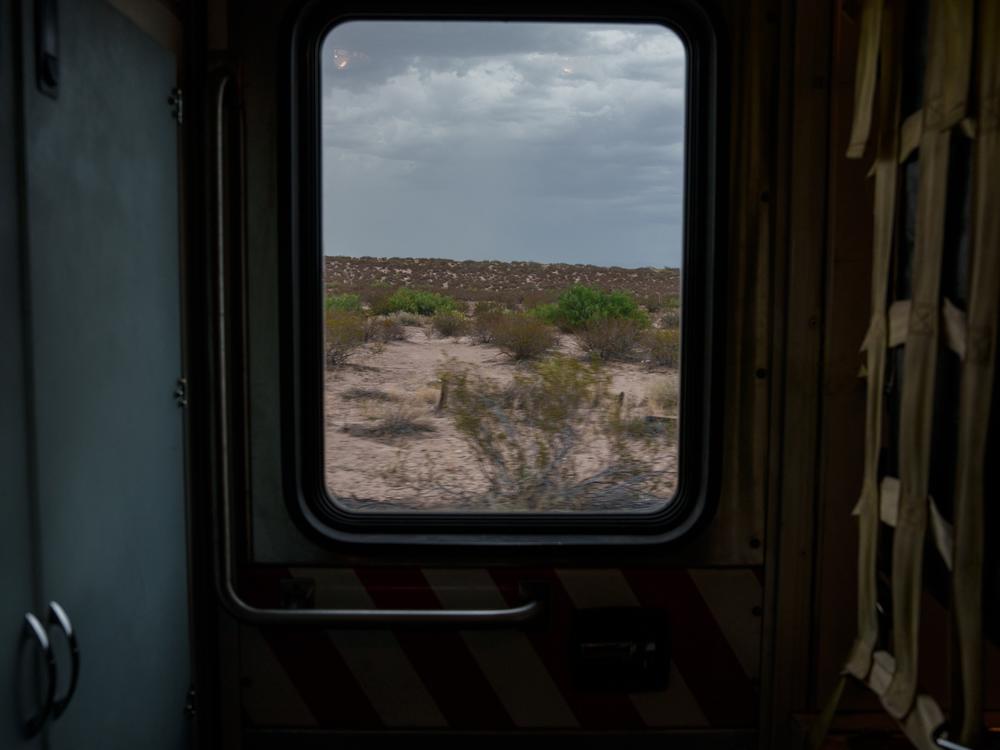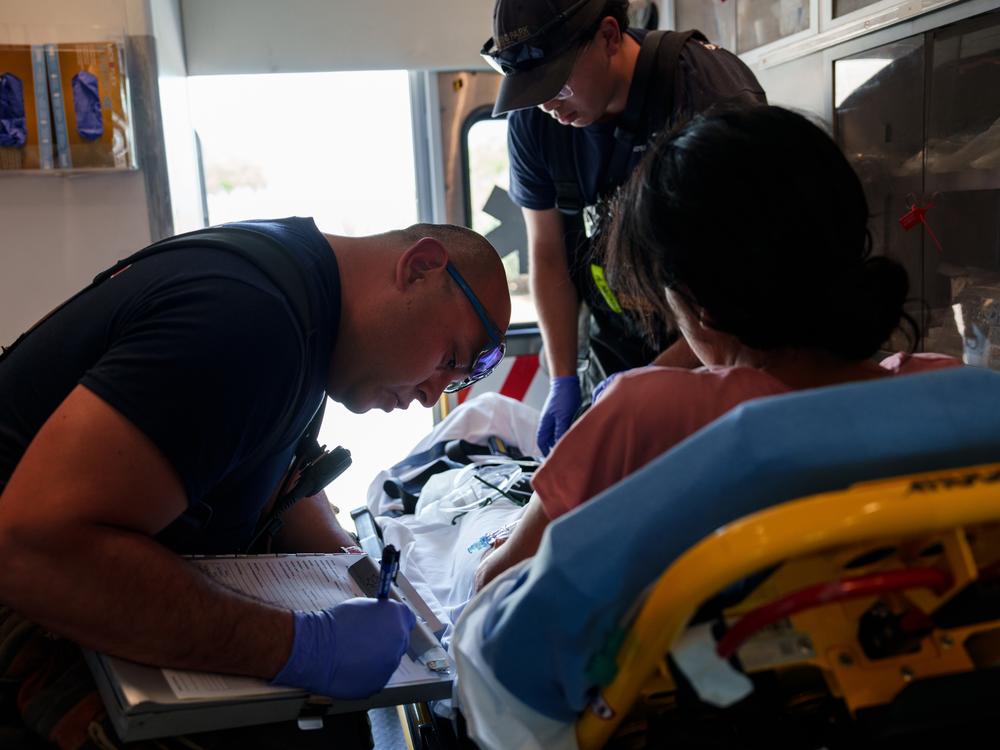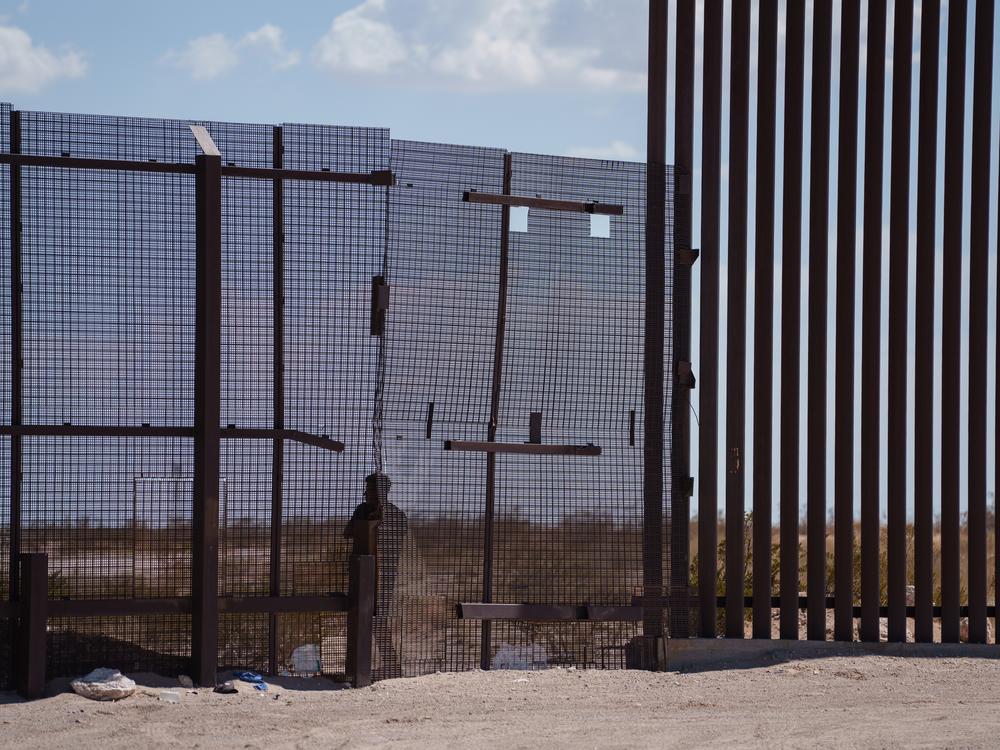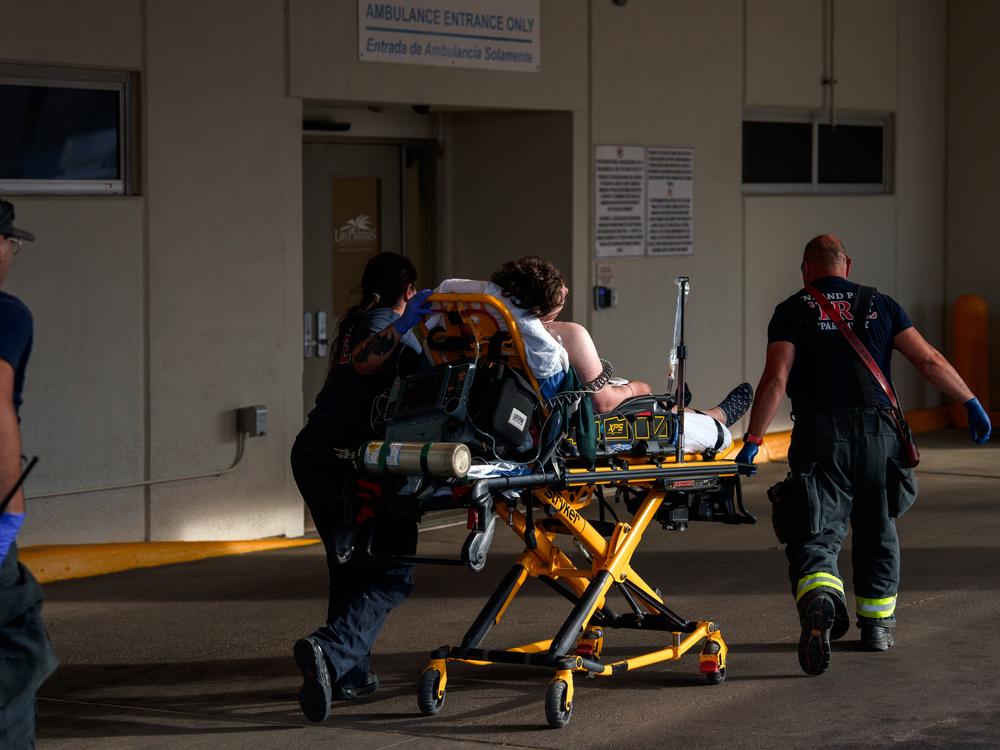Section Branding
Header Content
Border town firefighters scramble to save migrants from extreme summer heat
Primary Content
SUNLAND PARK, N.M. — It’s a relatively quiet — and hot — afternoon at Sunland Park’s Fire Department Station 1.
Some firefighters working the shift are prepping for dinner. Others are doing office work.
Suddenly, a loud radio call blasts through the station’s speakers.
“I think it’s going to be a female subject, possibly undocumented,” a female dispatcher says.
Four firefighters rush to get ready, which includes loading ice into a cooler. The ice is essential — it's used to lower the body temperature of someone in distress from extreme heat.
The men jump on two different trucks, and about 10 minutes later arrive at the scene where a woman sits, propped up against a stop sign and surrounded by neighbors and local police.
"Señora! Señora!" Fire Captain Abraham Garcia shouts, kneeling in front of the 28-year-old woman and asking her in Spanish, “Where are you? What happened?”
Another firefighter picks up her passport. It says her name is Julissa, and she’s from Ecuador.
She isn’t responding to Garcia’s questions. Her eyes are open, but they are glazed.
She’s lethargic, and her blood glucose level is high — a sign of dehydration. García suspects she’s pregnant.
Firefighters wrap her in a white sheet that had been soaked in ice water and continuously pour cold water over her head.
Eventually, she’s put in an ambulance and transported to the hospital.
This town borders Texas to the east and Mexico to the south. Although heavily guarded by the U.S. Border Patrol, it’s also a place where migrants try to enter the U.S. and blend into the neighborhoods. Major freeways and a railroad line are nearby.
There’s a wall and heavy surveillance by the Border Patrol on vehicles, horses and helicopters.
It is also part of the El Paso Border Patrol sector — which includes parts of Texas and all of New Mexico.
The terrain is rough, with no natural shade. It goes from hard soil, to rocks, to sand. Temperatures can reach up to 120 degrees Fahrenheit.
That’s why rescuing and aiding migrants in distress is something Garcia sees too often, especially during the summer.
His department has been overwhelmed by the rising number of emergency calls to help migrants. Many of them were injured on their journey, and some were left behind by smugglers.
“It’s been tasking our resources, on our personnel,” Garcia admits. “But, you know, that’s just the game that we are in today.”
Garcia has been a firefighter for over 20 years, and says his job has shifted.
Putting out structure or brush fires? Providing first aid to someone having an allergic reaction? No problem. He was trained to do all of that.
But since 2019, he says most of the calls to his department have to do with aiding unauthorized migrants who get lost and get dehydrated or injured while trying to evade Border Patrol agents.
“I imagine them going through what they’ve gone through already — they are malnourished, they haven’t been drinking water, some of them they are sick and need medication,” Garcia said. “So by the time they get to the U.S. side, they are super-exhausted.”
In this sector, there were 71 migrant deaths in 2022. In 2023, that number more than doubled, according to U.S. Customs and Border Protection.
Immigration authorities fear extreme heat could lead to even more deaths, and the CBP’s website even includes a section about “heat awareness.”
“What we’ve seen here in the sector relating to heat-related illnesses and rescues is a rise in migrants that are being left behind by human smugglers,” Orlando Marrero Rubio, a Border Patrol spokesperson in this area, told reporters last month.
He said migrants need to understand the dangers of crossing the border without authorization.
Many Border Patrol agents are certified emergency medical technicians. The agency has also put in place what they call “Emergency Safety Beacons.” These are sensors that migrants can activate to get rescued by Border Patrol.
But because of the high numbers of migrants crossing, the Sunland Park Fire Department had to shift gears, García says.
“As the years have gone by and we started seeing this uptick in migrants' calls, we had to change our tactics a little bit — learn new stuff, new tactics so that we can better help these people,” Garcia says.
NPR spent two days with the Sunland Park Fire Department and nearly 10 migrants got emergency care.
One of the days, firefighters assisted Border Patrol in helping a group of six migrants. While first responders were busy putting each person in an ice bath, one man in the group ate the contents of an ice pack out of desperation.
Later that evening, another man was rescued near an industrial park. Paramedics said the person was a 21 year old from Mexico, with a body temperature of 107 degrees Fahrenheit.
In the ambulance he was gasping for air, and was intubated at the hospital.
It’s unclear whether he or any of the other migrants rescued those two days recovered, and since they were in custody of the Border Patrol, NPR couldn’t verify their identities.
It’s possible that a family member of one of the migrants called the Fire Department asking for information on their loved ones. That happens often, Garcia said.
But there’s only so much he can do.
“We are lucky if we get a name, date of birth — that’s all we get,” Garcia said. “Sometimes we don’t get anything because there’s such an emergency going on that I don’t have time for that. It’s very unfortunate.”
